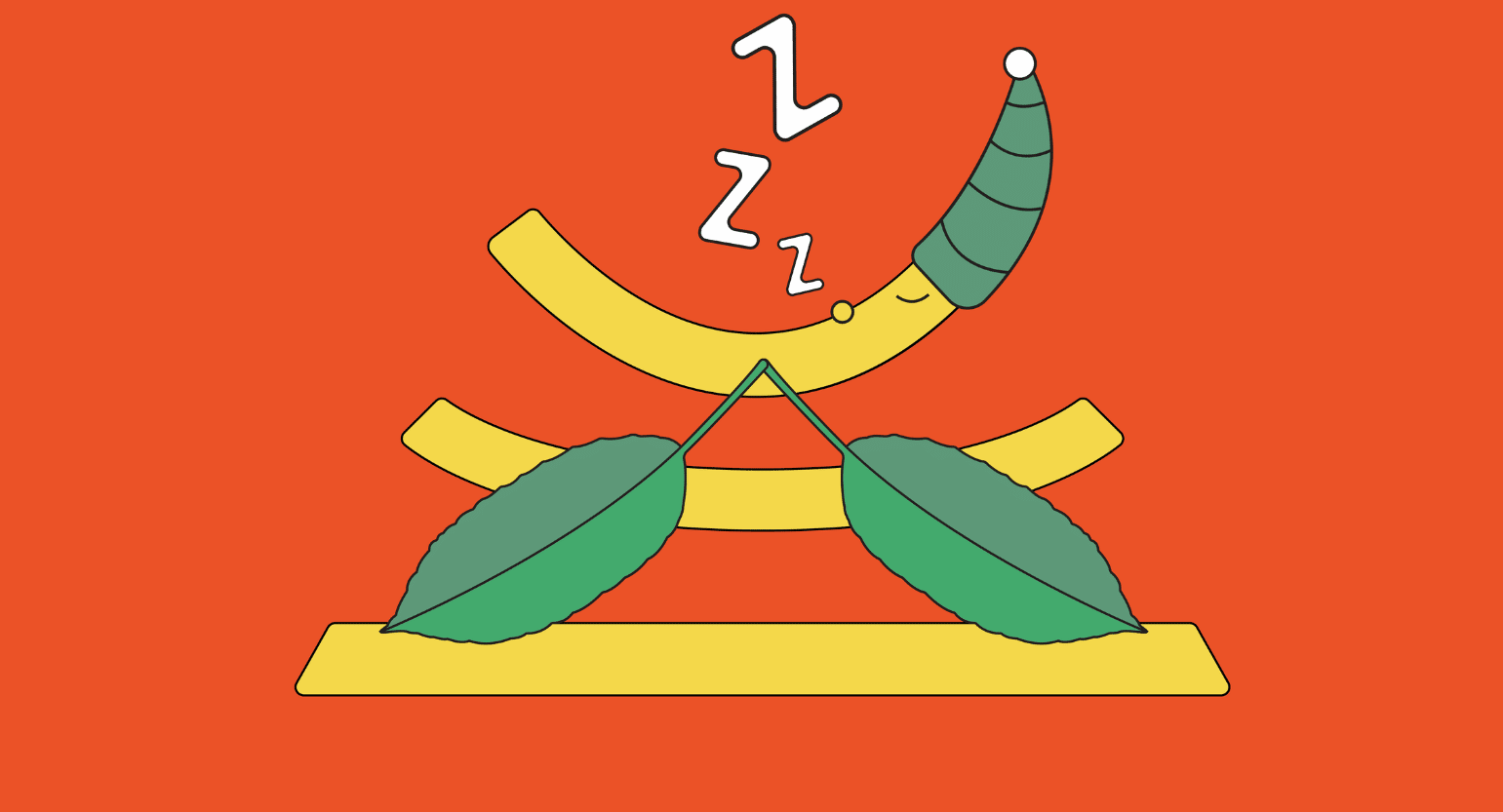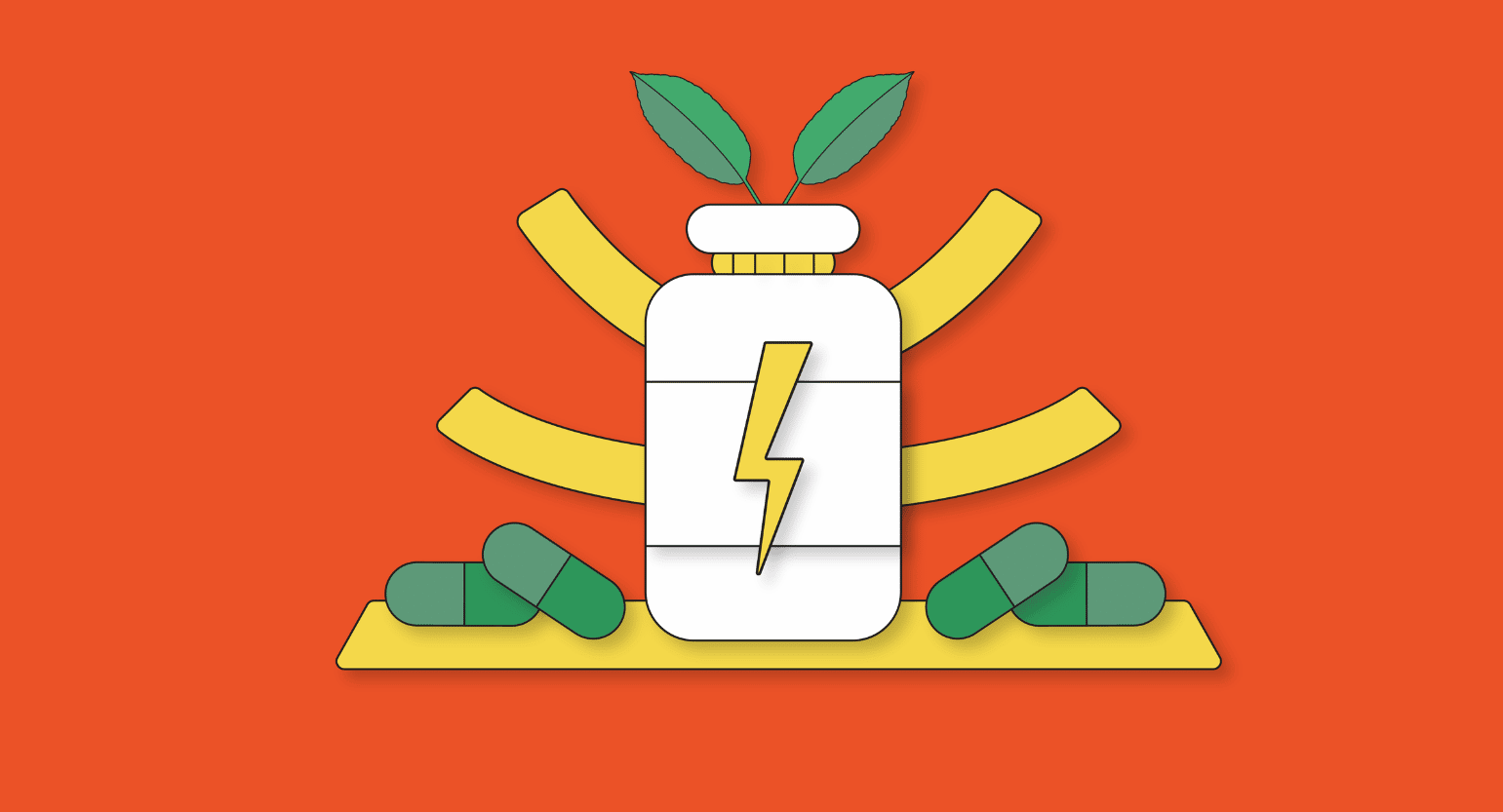What Are The Side Effects of Kratom?
Kratom can actually cause quite a few different side effects. The catch is that most people only experience a few of them.
It’s important to note that most of these side effects indicate that you’re misusing kratom — most likely, you’ve taken too much [1].
Chronic long-term kratom usage can also cause an array of side effects. Many users find that the effects of kratom start to falter once they fall into a daily usage pattern. If they continue to use, the once-positive effects of kratom transmute into negative and uncomfortable side effects.
Some side effects, however, can emerge with as little as a single dose. Just as substances like coffee come with the inevitable side effects of heightened blood pressure and an increased heart rate, some side effects of kratom simply result from how it acts in the body.
Many of these side effects are similar to those caused by opioid analgesics and are well-understood by science. However, kratom can also cause some unfamiliar side effects which are not yet understood.
Your takeaway from this should just remind you to be careful and aware. Pay attention to your body during and after your kratom experience. If you can catch the first whiff of a side effect while it’s still subtle, then you can make the appropriate changes to avoid them in the future.
Nausea & Vomiting
Most of the times, nausea and vomiting are a sign that you’ve taken more kratom than your body can handle. Otherwise, they can also be a result of withdrawal. They are especially common in users who have not taken kratom before [2].
Nausea and vomiting are some of the few kratom side effects that can be just mechanical in nature. In other words — at least in your average, everyday case of nausea — there’s not always a complicated biological reason for these effects.
Often, you feel sick because of this herb’s fibrous nature. Tough fibers like this are difficult for your body to process. This is one of the reasons that the people of Indonesia preferred to simply chew the leaves rather than swallow them whole.
However, nausea can also result simply from alkaloid overload if you take extremely high doses — no matter how you take them.
Some users will recommend that you only take kratom on an empty stomach since it hits you faster and stronger. In terms of safety, however, this is not great advice.
For the purpose of harm reduction, it’s a good idea to always take kratom on a full stomach.
Tips For Avoiding Nausea & Vomiting With Kratom
- Making kratom tea with ginger is a good way to soothe nausea.
- Nausea can sometimes be avoided by eating a healthy meal before taking your kratom.
- Staying hydrated can help you avoid constipation.

Lethargy & Sedation
Kratom is generally stimulating at first. This stimulation tends to fade off into a gentle relaxation later on.
However, as you continue to use kratom daily, these effects will start to change. The initial, energetic rush will become shorter and less pronounced. The post-energetic relaxation will amount to a sort of lethargic fatigue.
If you continue to use kratom after its beneficial effects start to wane, you may develop chronic fatigue. As your adrenaline and dopamine systems burn out, your body will become less capable of producing energy on its own.
At this point, you’ll find that you need to take kratom simply to motivate yourself to do anything. To avoid this, take a break from using kratom as soon as you notice that its effects are starting to dwindle.
Tips For Avoiding Lethargy with Kratom
- Reduce your dose of kratom. People are surprised to find that a lower dose often produces more powerful effects.
- Switch to another kratom strain. ‘Stale strain syndrome’ is a popular term among kratom users, although there may not be much science to back it up. The suggestion is that switching up strains prevents you from becoming tolerant to certain alkaloid ratios.

Dizziness
At high doses, and especially with sedating strains, kratom can cause dizziness. This is often one of the side effects that emerge alongside the wobbles. We will discuss the wobbles in more detail later.
Dizziness is most often caused by a drop in blood pressure but can also be a sign of dehydration — which is much more dangerous.
Tips For Avoiding Lightheadedness with Kratom
- Lie down. The dizziness usually fades into a pleasurable relaxation once you’ve gotten off your feet.
- Avoid sudden movements.
- Drink plenty of water while you consume kratom.
Constipation
Constipation is a result of kratom influencing the body’s opioid receptors. This system slows down your digestion and decreases motility (bowel movements).
Some people experience constipation after a single dose of kratom. For most people, constipation occurs after using kratom for several days straight.
In either case, if you’re getting constipated, you might want to reduce the amount of kratom you use. Chronic constipation can cause problems with nutrient absorption.
Tips For Avoiding Constipation with Kratom
- Make sure you stay hydrated when using kratom, as dehydration can slow down your bowels.
- Try to eat a diet rich in fibrous fruits and vegetables. Even though kratom itself is basically pure fiber, it’s very difficult to digest. Dietary fibers will help keep you regular.
- Avoid using kratom every day.

Brain Fog & Related Effects
One of kratom’s most common mental side effects is brain fog and general cognitive impairment [3]. Brain fog is a term used to describe a sort of muffled thought process. You may find that you’re thinking slower or that you have a harder time calling things to memory.
Some people find that they experience brain fog as the kratom begins to wear off. Stimulating strains tend to fade into a sort of relaxation, although many find that this is more akin to lethargy or fatigue than relaxation. Much like a caffeine crash, this is often accompanied by brain fog.
Brain fog can also become a persistent and constant problem for some using kratom daily. Several factors caused by abuse, such as adrenal fatigue and brain chemical imbalances, can cause chronic brain fog even when you’re not using kratom.
Regular, chronic kratom users (taking more than 15 grams per day) often report that heavy usage adversely affects their memory and cognition. This gets in the way of their social skills, making it harder for them to have a witty or structured conversation.
Brain fog can also impair function at work and lead some people down the road to kratom addiction. Brain fog tends to be more pronounced as the kratom wears off. In an attempt to avoid the inevitable brain fog, some users – especially those invested in mentally demanding jobs – choose to re-dose more kratom every couple of hours in hopes of riding the stimulation and focus all day.
Tips For Avoiding Brain Fog with Kratom
- Stay hydrated. The brain relies on water for its neurons to fire properly. If you’re dehydrated, you’re going to think more slowly.
- Make sure that you are getting all of your daily nutrients. The B vitamins, magnesium, omega 3s, and choline are all super important for brain function.
- Take a smaller dose. The crash will be much less intense, and smaller doses prevent alkaloids from building up in your bloodstream.

Anxiety
Many people use kratom to manage their anxiety. However, there is a saying among herbalists and practitioners of plant medicine: “If you continue to use plant medicine as a Band-Aid rather than addressing your issues, its side effects will manifest as the very issues you’re trying to treat.”
Even people with no prior anxiety issues have found that kratom abuse can lead to anxiety disorders. This anxiety tends to disappear for most people after abstaining from kratom for a week or two.
Kratom can cause anxiety in several ways. Brain fog can lead to confusion and irritability, leading to anxiety. Using it as a band-aid anxiolytic can also cause your anxiety to ‘bottle up,’ and when it releases, you may find yourself in a full-blown panic attack.
Kratom can also influence the adrenaline system. Adrenaline rushes trigger the fight-or-flight response — one of the most common symptoms of anxiety.
Over time, abuse of this plant can cause adrenal fatigue. Physically dependent kratom users sometimes find that they experience a surge of adrenaline in the middle of the night or in the morning as their adrenaline system attempts to find balance.
Tips For Avoiding Anxiety with Kratom
- If kratom is causing anxiety, it’s a sure sign that you are using too much. Reduce your dose and consider taking a break.
- Use these opportunities to reflect on your anxiety and identify its route cars so you can work on it.
- Switching strains of kratom may reduce anxiety.

Other Side Effects
Here are a few other side effects that kratom can cause. Many of these are uncommon or not well-understood.
- Allergic reactions that affect the skin, sinuses, or digestive tract.
- Confusion and short-term memory issues can occur with long-term use.
- Hallucinations and delusions are extremely uncommon but have occurred.
- Symptoms of psychosis and mania. These are generally only seen in people who have psychotic disorders. Any sort of stimulant can trigger psychosis and mania in these cases.
Does Kratom Have Any Long-Term Side Effects?
The long-term safety of kratom isn’t well understood. This is because kratom only entered the bubble of Western science fairly recently. There haven’t been many long-term studies on kratom — at least not in our preferred methodology.
Traditional medicine systems in the Asian countries where it grows acknowledge that kratom is just as safe as any other plant. These medicinal systems don’t consider any single plant to be objectively more or less dangerous than another. Safe, responsible use, and a deep understanding of the plant and how it works are what create safety. Misuse and abuse of the plant, such as using it daily for no medicinal purpose, creates problems.
A few of the studies that have been done suggest that kratom abuse causes some long-term side effects. This is no surprise, considering long-term abuse of anything will cause problems.

Kratom & Liver Function
Research reports that chronic use of kratom has resulted in acute liver injury [4]. Most of these cases involve similar symptoms of liver toxicity: dark urine, jaundice, fatigue, etc.
In most cases, these symptoms emerged within one to eight weeks of the individual using kratom. It seems to be a reaction between a certain biological action rather than the result of long-term, chronic kratom use. After having their liver enzymes tested, the tests would come back dangerously high.
After stopping the use of kratom, their liver enzymes would return to normal and the symptoms would disappear.
However, once the kratom community heard about this, many regular users began getting their liver enzymes tested regularly. The majority of these tests came back normal.

Kratom & Kidney Function
Kratom doesn’t specifically damage the kidneys. However, if your liver begins to suffer, the kidneys pick up some of the slack. Toxins that are not effectively processed by the liver will be passed through the kidney instead, leading to kidney damage.
It’s extremely unlikely that kratom would cause kidney failure. However, people who already struggle with chronic liver problems may experience a worsening of these issues with kratom use. In this case, kidney damage may be a real risk.
Kratom & Hormonal Health
Kratom can also change the production of hormones in the body. In particular, it’s known to change how your body produces testosterone [5].
One of the ways that kratom does this is by changing the way that the hypothalamic-pituitary axis works. The disruption of this axis occurs in aging men and results in decreased testosterone. The same likely occurs when kratom causes this disruption.
Kratom may also influence the way the body absorbs and excretes magnesium. Magnesium is one of the most important nutrients for producing testosterone. If you don’t have enough magnesium, you won’t be able to produce testosterone.
Many of the side effects of long-term kratom use can be attributed to low testosterone. Decreased libido, low energy levels, and brain fog are all clear symptoms of low testosterone.
However, results for this are not consistent. Some people have gotten their T levels tested after years of kratom use and had them come back normal, and others have had them be significantly lower than usual.
This suggests that kratom interferes with testosterone production but that there might be other factors involved.
Kratom & Emotional Imbalance
Kratom can also cause some changes in your emotional health.
On the one hand, it can lead to emotional lability [6]. The constant ups and downs involved with the habitual use of kratom can leave you feeling elated one moment and dejected the next. This can be challenging for people to work with.
Kratom is an analgesic pain killer. In addition to killing physical pain, it can numb “mental pain” as well. This is one of the reasons that it works well for fighting depression and anxiety.
Unfortunately, kratom is not selective. It does not pick and choose which emotions to pacify; it simply blunts your ability to feel them.
Once in a while, this is fine and generally won’t lead to any issues. Most kratom strains provide a euphoric boost that leaves people chatty and motivated.
However, long-term kratom use can lead to fairly significant emotional changes. People who have been in romantic relationships often report that kratom abuse creates some difficulties because of these issues.
Irritability
Many people find that kratom ‘shortens their fuse.’ This is a common issue faced by users of all types of opioid-related substances.
As an emotional analgesic, kratom can inhibit your ability to empathize with others. This may cause you to speak or act without thinking or to become irritated with people that would otherwise not bother you.
Kratom tends to provide a warm and pleasant buzz that allows you to focus on your own goals, actions, thoughts, etc. If anyone tries to pull you away from what you’re focused on, you may be quicker to snap than usual.
Emotional blunting / apathy
One of the biggest issues associated with long-term kratom use is emotional blunting. Your ability to connect with your own emotions and others will be hindered.
Kratom can downregulate several key receptors that are involved in our emotional regulation, especially dopamine. As your dopamine system downregulates, you will lose your ability to experience pleasure. This can make you unhappy, unmotivated, and constantly seeking kratom to bring you back up.
For reasons not yet understood, kratom and other opioid compounds seem to desensitize people to emotional stimuli. Touching movies, heartfelt conversations, or other emotional cues will have less of an effect on those who are dosing kratom regularly.
Depression
Depression isn’t always the direct result of kratom, although it can be [7]. Rather, it’s a side effect associated with addiction. When you become dependent on a substance, you become reliant on it for feeling comfortable. Without it, you may find yourself depressed.

Kratom & Hyperalgesia / Aches & Pains
Kratom is a painkiller. Chronic use of opioid painkillers leads to a condition called hyperalgesia. This is basically the opposite of downregulation. It is an upregulation of your pain sensitivity.
As such, people who use kratom every day for years often have an increased sensitivity to pain. This can manifest as seemingly random aches and pains. They may also be more sensitive to injuries.
Kratom causes hyperalgesia to a lesser degree than other opioids [8], but it is still something to be aware of.
Kratom & Low Libido
In the early stages of use, kratom can be fantastic for libido. However, as you continue to use it and it adversely affects your hormonal balance and energy levels, you will probably experience a significant drop in libido.
One of the reasons for this is the increase in prolactin that results from kratom use [9]. Prolactin tends to inhibit libido and can interfere with sexual ability, especially in men.
This can be countered somewhat by taking natural aphrodisiac herbs such as maca root and Rhodiola. However, a decreased libido is a more serious symptom than many people might consider, and the best solution is to stop using kratom.
Your libido, or sex drive, is your strongest and most primal drive – the drive to create. Pay close attention, and you may notice that as your libido drops, you don’t just lose interest in sex; you lose interest in many other simple pursuits.
If you are experiencing low libido, it’s in the best interest of yourself and your partner, if you have one, to stop using so much kratom.

Does Kratom Interact Negatively With Medications?
Kratom has actually been proven to be an inhibitor of the cytochrome enzyme P450 (CYP450) [10]. This enzyme is responsible for breaking down several drugs and supplements. Using kratom alongside any drugs metabolized by CYP450 might increase the risk of side effects.
A few examples of these are:
- Anti-epileptic drugs
- Blood pressure medications
- Blood thinners
- Oral Contraceptive Pills (OCPs)
- Statin medications
- Theophylline
If you’re taking a medication that warns you against consuming grapefruit juice, you may want to avoid using kratom here as well. Grapefruit is a strong inhibitor of cytochrome P450 isoenzymes.
Kratom can also interact with anxiolytics, muscle relaxants, and other sedatives, profoundly increasing their effects. This can increase the risk of side effects.
Mixing kratom with cough suppressants containing DXM can significantly increase the potency of kratom.
Is Kratom Safe?
Kratom is safe when used responsibly.
It can produce withdrawal symptoms that can be quite uncomfortable when used irresponsibly. Kratom does not cause overdoses, serious illness, or violent behavior.
There is an active campaign to convince the general public that kratom is unsafe. However, in many ways, this campaign is backfiring.
This article showcases how the FDA undermines its own authority with shoddy and nonscientific reporting on deaths allegedly related to kratom. To date, nearly all of the cases of death the FDA has blamed on kratom have involved people who are under the influence of multiple drugs — often illicit or prescription drugs with serious side effects.
For example, the FDA attributes kratom to the death of a man who fell out of a window and broke his arm. He refused treatment from professionals and ultimately died, and upon autopsy, he was found to have 9 drugs in his blood — one of which was mitragynine.
While the FDA currently refuses to allow the publication of studies that prove kratom is safe, the fallacious studies they are posting to discredit kratom ironically attest to its safety. Even with a national influence and huge numbers of scientists and researchers employed, the FDA can produce no valid reports on kratom being unsafe when used responsibly.

Kratom Adulteration
Because of the campaign against kratom, as well as the ongoing opioid epidemic in the United States and throughout the world, many people are worried about adulteration. Adulteration of natural herbal substances can cause serious side effects and give a bad name to these otherwise harmless products.
The adulteration of products sold in the head shops is nothing new. You may remember the spice craze. Spice was a term used to describe legal alternatives to marijuana. These legal alternatives were actually made with harmful research chemicals that had serious long-term effects.
Many people worry that kratom may be adulterated the same way. However, this is very unlikely. To be successfully adulterated in any enjoyable way, someone would have to use some sort of opiate.
There was one recorded instance of this happening. The Swedish product Krypton Kratom was found to be adulterated with the research chemical, 0-desmethyl-tramadol. At the time it was available, legal, and cheap. Nine people died, all of them were in Sweden, and the product was pulled immediately. Unfortunately, this had a far-reaching ripple effect in the kratom community as people are still concerned about adulteration.
Nowadays, no opioid R.C.s are legal, and thus the risk of contamination is quite low. However, it would still be wise to be cautious with ultra-potent kratom extract.
What Are The “Kratom Wobbles”?
The kratom wobble, or simply the wobbles, is a collection of symptoms that people experience when they take too much kratom. One way to imagine the wobbles is by imagining the jitters, a common collection of symptoms experienced when drinking too much caffeine.
Whereas the jitters are caused by overstimulation, the wobbles are caused by oversedation. The two are essentially the polar opposite of one another.
Symptoms of nervous system overexcitation mark the jitters. This means things like shaking, anxiousness, restlessness, and agitation.
The wobbles, on the other hand, happen when your nervous system is underfiring. You will become dizzy, confused, and have a hard time coordinating. Many users report that this feels similar to vertigo. Some find that they become nauseous and even vomit.
The best way to manage these symptoms is to simply lie down. Once you take the pressure off of your body, you’ll probably be able to enjoy a very relaxing experience.

What’s the Safe Dose of Kratom?
The safe dose of kratom varies from person to person. Factors like metabolism, age, gender, weight, diet, and tolerance to the plant can all come into play.
Ultimately, the plant is not dangerous. There’s very little risk of taking a large dose that you’ll overdose and die or even require hospitalization. However, in the case of plants such as this, a safe dose would avoid most of the unwanted side effects.
Most people take somewhere between one and eight grams of kratom. On the lower end of the spectrum, you will find stimulating effects. As you increase the dosage, the effects will become more sedating. Increasing the dosage also increases the risk of side effects.
The best way to determine the safest dose for you is to purchase a sensitive scale. Start out with a small dose of about half a gram. Most likely, you won’t feel much from this. However, some highly sensitive individuals find that half a gram is more than enough.
If you don’t feel much from this dose, wait a few hours and then increase it by half a gram. Continue to do this until you find your sweet spot, and don’t go over that.
If you find that you’re beginning to develop a tolerance and that your sweet spot doesn’t provide the effect that you want, this doesn’t mean that you should increase your dose. This means that your body is becoming dependent on kratom and that you should stop. If you don’t, some of the long-term side effects may begin to appear.

Summary: What Are the Most Common Side Effects of Kratom?
As far as plants go, kratom is considered safe. One of the reasons that it has gotten a bad reputation is because people have abused it. Abusing any plant will lead to side effects, and kratom is no exception.
The side effects of kratom abuse can range from physical side effects, like nausea and vomiting, to mental side effects like brain fog. In most cases, these side effects can be avoided entirely by using reasonable doses and avoiding daily usage.
Using the plant responsibly allows you to enjoy its benefits without the risk of uncomfortable side effects.
- Veltri, C., & Grundmann, O. (2019). Current perspectives on the impact of Kratom use. Substance abuse and rehabilitation, 10, 23.
- Singh, V., Mulla, N., Wilson, J. L., Umansky, A., Lee, J., Stead, T., & Ganti, L. (2020). Intractable nausea and vomiting in naïve ingestion of kratom for analgesia. International Journal of Emergency Medicine, 13(1), 1-4.
- Singh, D., Narayanan, S., Müller, C. P., Vicknasingam, B., Yücel, M., Ho, E. T. W., … & Mansor, S. M. (2019). Long-term cognitive effects of Kratom (Mitragyna speciosa Korth.) use. Journal of psychoactive drugs, 51(1), 19-27.
- Bethesda, MD (2012) LiverTox: Clinical and Research Information on Drug-Induced Liver Injury. National Institute of Diabetes and Digestive and Kidney Diseases
- LaBryer, L., Sharma, R., Chaudhari, K. S., Talsania, M., & Scofield, R. H. (2018). Kratom, an emerging drug of abuse, raises prolactin and causes secondary hypogonadism: case report. Journal of investigative medicine high impact case reports, 6, 2324709618765022.
- Rech, M. A., Donahey, E., Cappiello Dziedzic, J. M., Oh, L., & Greenhalgh, E. (2015). New drugs of abuse. Pharmacotherapy: The Journal of Human Pharmacology and Drug Therapy, 35(2), 189-197.
- Bowe, A., & Kerr, P. L. (2020). A complex case of kratom dependence, depression, and chronic pain in opioid use disorder: effects of buprenorphine in clinical management. Journal of psychoactive drugs, 52(5), 447-452.
- Wilson, L. L., Chakraborty, S., Eans, S. O., Cirino, T. J., Stacy, H. M., Simons, C. A., … & McLaughlin, J. P. (2021). Kratom alkaloids, natural and semi-synthetic, show less physical dependence and ameliorate opioid withdrawal. Cellular and molecular neurobiology, 1-13.
- Alsarraf, E., Myers, J., Culbreth, S., & Fanikos, J. (2019). Kratom from head to toe—case reviews of adverse events and toxicities. Current Emergency and Hospital Medicine Reports, 7(4), 141-168.
- Hanapi, N. A., Ismail, S., & Mansor, S. M. (2013). Inhibitory effect of mitragynine on human cytochrome P450 enzyme activities. Pharmacognosy Research, 5(4), 241.









